What Science Says About Caffeine, Burnout, and Stress
Feeling burned out at work? You’re definitely not alone. About 25% of us report feeling consistently burned out, and, according to a 2023 Gallup poll, the majority of Americans say they feel burned out at work at least some of the time.
A big part of the problem is the constant pressure to do more, faster — tight deadlines, endless meetings, and the expectation that we’re always available. It’s exhausting. And now, with AI changing the way we work, many of us are being asked to keep up with a pace that feels impossible and the lines between work and life are becoming ever more blurred.
But, as we’ll discuss here, there are some simple changes we can all make to help both prevent and recover from workplace burnout.
Recognizing the Signs & Symptoms of Workplace Burnout
The World Health Organization (WHO) officially recognizes burnout as an occupational phenomenon (WHO, 2019) — meaning the frustration, exhaustion, and sense of detachment you may be experiencing at work isn’t just “part of the job” or something you should just push through. Burnout isn’t about resilience or willpower. It’s the result of chronic workplace stress that hasn’t been successfully managed. It’s not because you’re not strong enough; it’s because the systems we work in often demand more than what’s sustainable.
Burnout doesn’t happen overnight. It builds slowly over time, often starting with minor fatigue and escalating into something that is exceptionally hard to bounce back from. The World Health Organization identifies three primary dimensions of burnout:
- Persistent Exhaustion: You feel completely drained – there’s an ongoing depletion of your physical, mental, and emotional energy.
- Mental and Emotional Distance from Work: You may find yourself feeling increasingly cynical or detached from your job, or you may stop caring about the details you used to obsess over, or you may feel emotionally numb and disengaged from your coworkers.
- Declining Performance and Motivation: Tasks that once felt easy may now seem exceptionally difficult. You may struggle to concentrate, procrastinate more, or feel like you’re just going through the motions.
How Burnout Manifests Physically
Burnout doesn’t just affect your mood – it also takes a toll on your body and you may experience:
- Headaches or muscle tension
- Trouble sleeping, despite feeling exhausted
- Changes in appetite (eating more or less than usual)
- Stomach issues or digestive discomfort
- Increased susceptibility to colds and other illnesses
If any of this sounds familiar, it’s important to remember: burnout isn’t a sign of weakness. It’s a sign that your work environment, workload, or expectations might be unsustainable. And recognizing these symptoms is the first step toward making changes that protect both your physical and mental well-being.
 Caffeine Can Make Burnout Feel Worse
Caffeine Can Make Burnout Feel Worse
For decades, coffee has been deeply woven into the fabric of American work culture. The modern coffee break began gaining traction in the mid-20th century, giving workers a sanctioned pause in their workday to rest, socialize, and recharge with caffeine. In factory settings, short breaks helped combat physical fatigue during long shifts, while in offices, coffee became a symbol of productivity and mental focus. But the workplace has changed, and so has our relationship with caffeine. Instead of a break, coffee has become a crutch—fueling an unsustainable cycle of stress and exhaustion.
How Caffeine Fuels the Burnout Cycle
Caffeine does more than wake us up—it activates the body's stress response system. Research shows that consuming caffeine triggers the release of cortisol and adrenaline, the same hormones that spike when we’re under stress (Lovallo, 2005; Lane, 2002). While these hormones increase alertness in the short term, their long-term effects can worsen burnout symptoms if they remain elevated.
Here’s what happens when caffeine and burnout collide:
- Caffeine keeps your body in a state of stress. It activates the fight-or-flight response, making it harder to truly rest.
- Caffeine disrupts relaxation after work. Cortisol and adrenaline stay elevated longer, making it harder to unwind, even when you step away from work.
- Caffeine interferes with sleep. Caffeine lingers in the body for hours, reducing sleep quality and leading to next-day fatigue. While you might feel like you're getting to sleep, caffeine may still be preventing you from deep, restorative sleep.
- Caffeine fuels dependency. Over time, you need more caffeine to feel alert, which overloads the nervous system and worsens exhaustion. When this cycle repeats daily, it overworks the body's stress-regulation system, leading to what’s called HPA axis dysregulation—a condition where the body struggles to manage cortisol levels properly, making recovery from stress much harder.
Is Caffeine Masking Your Burnout?
Ask yourself:
- Do you still feel exhausted even after multiple cups of coffee?
- Have you increased your caffeine intake just to feel "normal"?
- Do you experience jitters, anxiety, or racing thoughts after coffee?
- Do you struggle with insomnia or restless sleep, even when you’re tired?
If so, your caffeine habit might be covering up deeper burnout symptoms, rather than fixing the root problem.

Breaking the Cycle: Smarter Strategies for Burnout and Caffeine Management
Burnout doesn't happen overnight, and breaking free from the caffeine-stress-exhaustion loop takes small, intentional changes. The good news? You don’t have to quit coffee altogether—just make small adjustments.
Here’s how:
Adopt Science-Backed Stress-Reduction Techniques. When caffeine and stress push your body into overdrive, these strategies can help restore balance and build long-term resilience:
- Move your body. Physical activity helps reset the nervous system and burn off excess cortisol. If stress has you stuck in fight-or-flight mode, a brisk walk or a few minutes of stretching can signal to your body that it's safe to relax.
- Hydrate properly. Mild dehydration mimics fatigue, making you feel sluggish—even if you’re caffeinated. Swap that extra cup of coffee for a glass of water and see how your energy levels improve.
- Breathe with intention. Deep breathing and meditation have been shown to lower stress hormones and counteract caffeine-induced tension. Try the 4-7-8 breathing technique (inhale for 4 seconds, hold for 7, exhale for 8) when you feel overwhelmed.
- Step outside. Natural light and fresh air help regulate circadian rhythms and boost alertness naturally—no coffee required. Even a five-minute outdoor break can make a difference.
Set Healthy Boundaries at Work. Burnout often stems from lack of control over work-life balance. Setting clear boundaries protects your mental and physical well-being. Define work hours, schedule real breaks, and try to truly unplug after hours.
Optimize Sleep for True Energy Restoration. Stimulants shouldn't be a substitute for real rest. Without high-quality sleep, no amount of coffee will fix your energy levels. Improve your natural energy with:
- A caffeine curfew. Avoid caffeine after 2 PM or switch to Px coffee, which doesn’t linger in your body for as long as caffeine.
- A sleep routine. A consistent sleep-wake schedule strengthens your natural energy rhythms—so you wake up refreshed.
- Reduce digital fatigue. Blue light from screens disrupts melatonin production, making it harder to wind down. Use blue-light blockers or switch off screens 30-60 minutes before bed.
- Make Smarter Caffeine Choices. You don’t have to quit coffee — just choose a better caffeine.
Px Coffee is a scientifically advanced alternative that gives you the benefits of caffeine without the crashes, jitters, or cortisol spikes. Unlike traditional caffeine, Paraxanthine provides:
- Smooth, sustained energy without overstimulating the nervous system
- No stress-induced adrenaline and cortisol spikes
- Better focus, fewer jitters letting you actually focus on getting your work done
- Less impact on sleep quality because Px doesn’t linger in your body like caffeine
How to Take Back Control from Workplace Burnout
What we've taken this to mean is that coffee isn’t necessarily the enemy—but how we use it makes all the difference. If caffeine has become a crutch to push through exhaustion, mask chronic stress, or replace real rest, it may be fueling burnout instead of fighting it.
The key is awareness. Understanding how caffeine interacts with stress and burnout allows us to make informed choices—ones that support sustained energy, productivity, and well-being, instead of just temporary relief.
If you’re feeling burned out take a closer look at your coffee habits. If you’re relying on coffee just to function, it might be time for a better energy strategy—one that works with your body, not against it. Consider switching to a superior source of energy. Px Coffee provides the benefits of caffeine without the crashes, jitters, or stress hormone spikes. With improved sleep quality. With more focus, better productivity, and real energy—without burnout.
Your body, mind, and productivity will thank you.
"...this stuff actually works. It gives you the “energy” of regular coffee without the jitters/cortisol spike. This is a game changer for me... I highly recommend it to anyone looking to reduce stressors, sleep disruptors, and burnout factors." - Kenneth G.


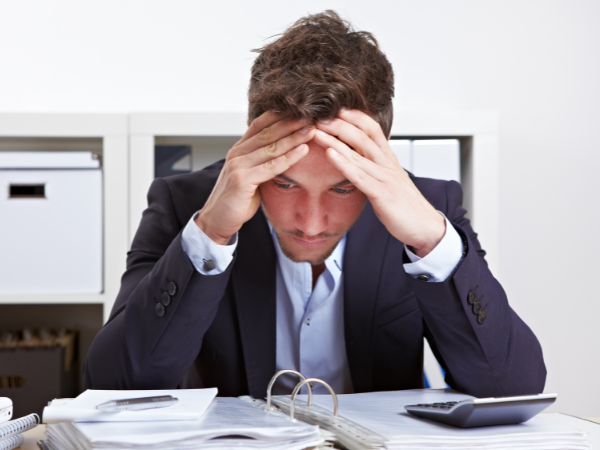
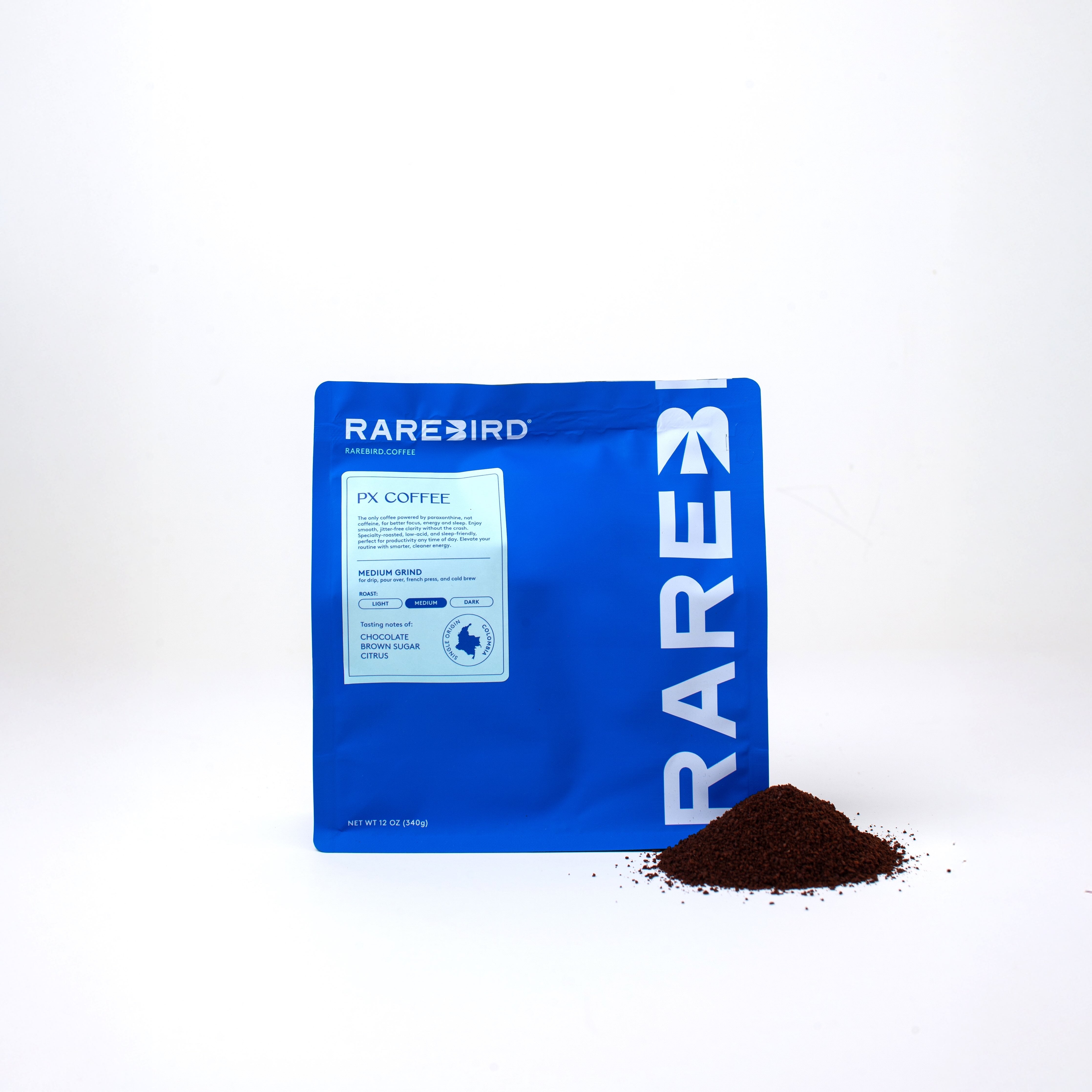
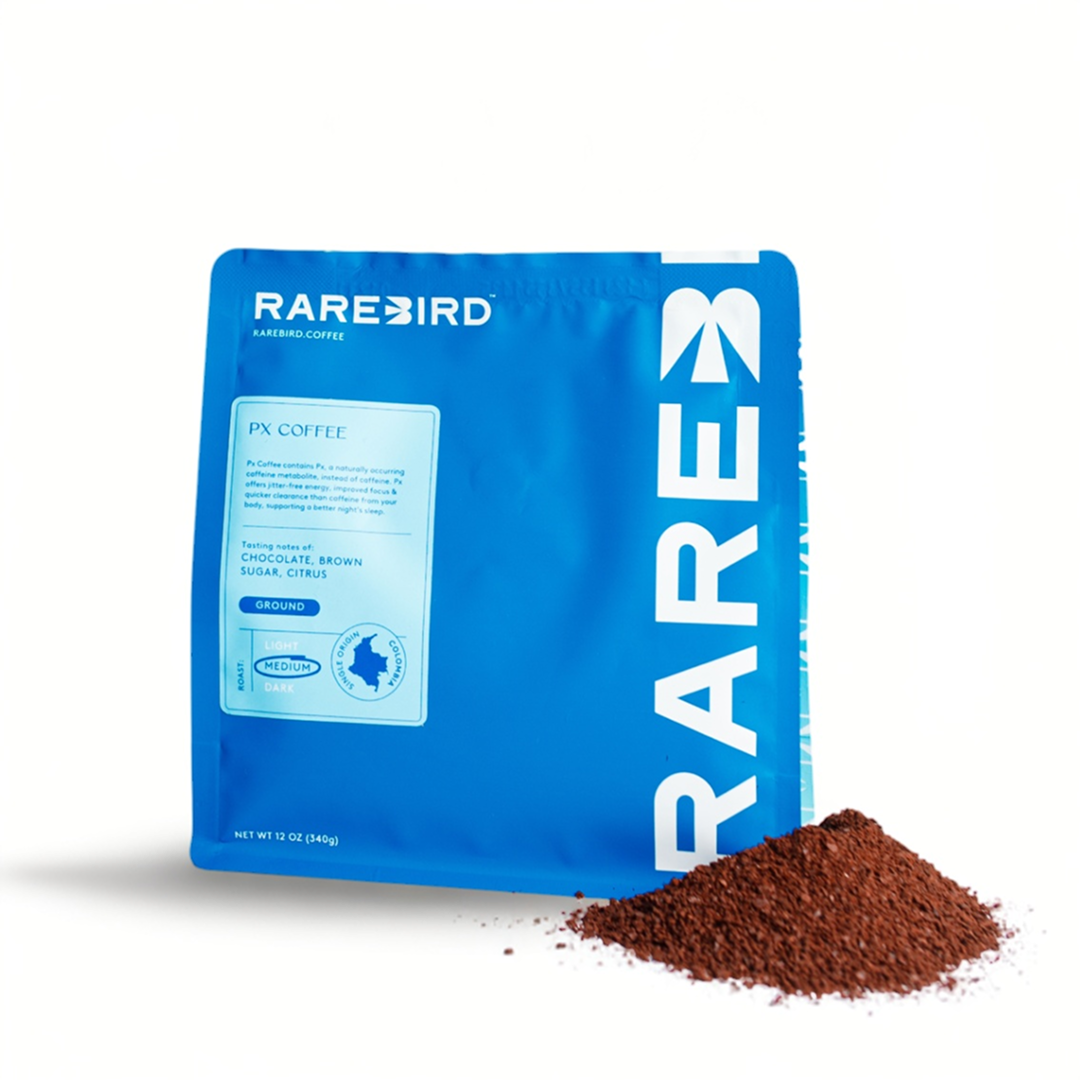
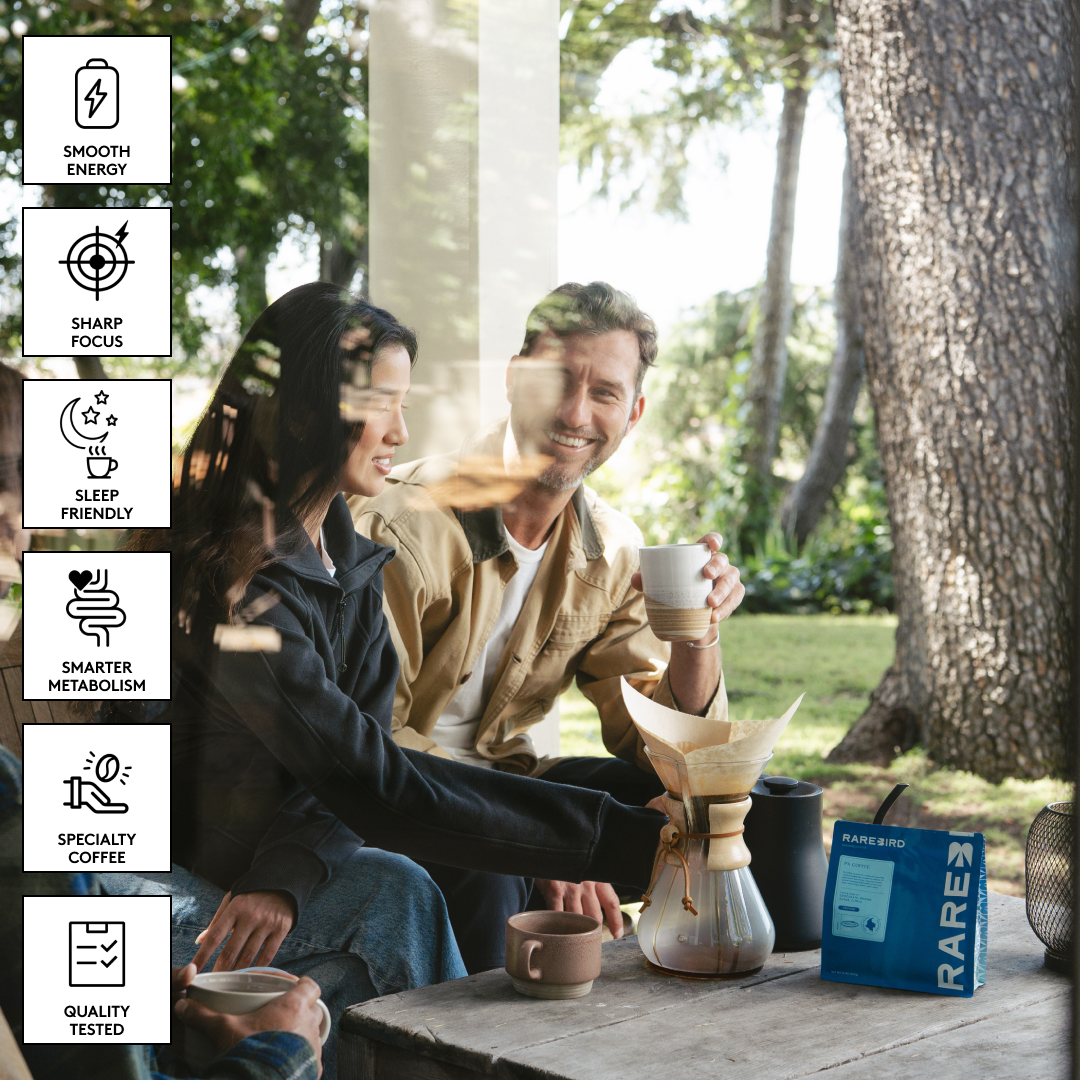
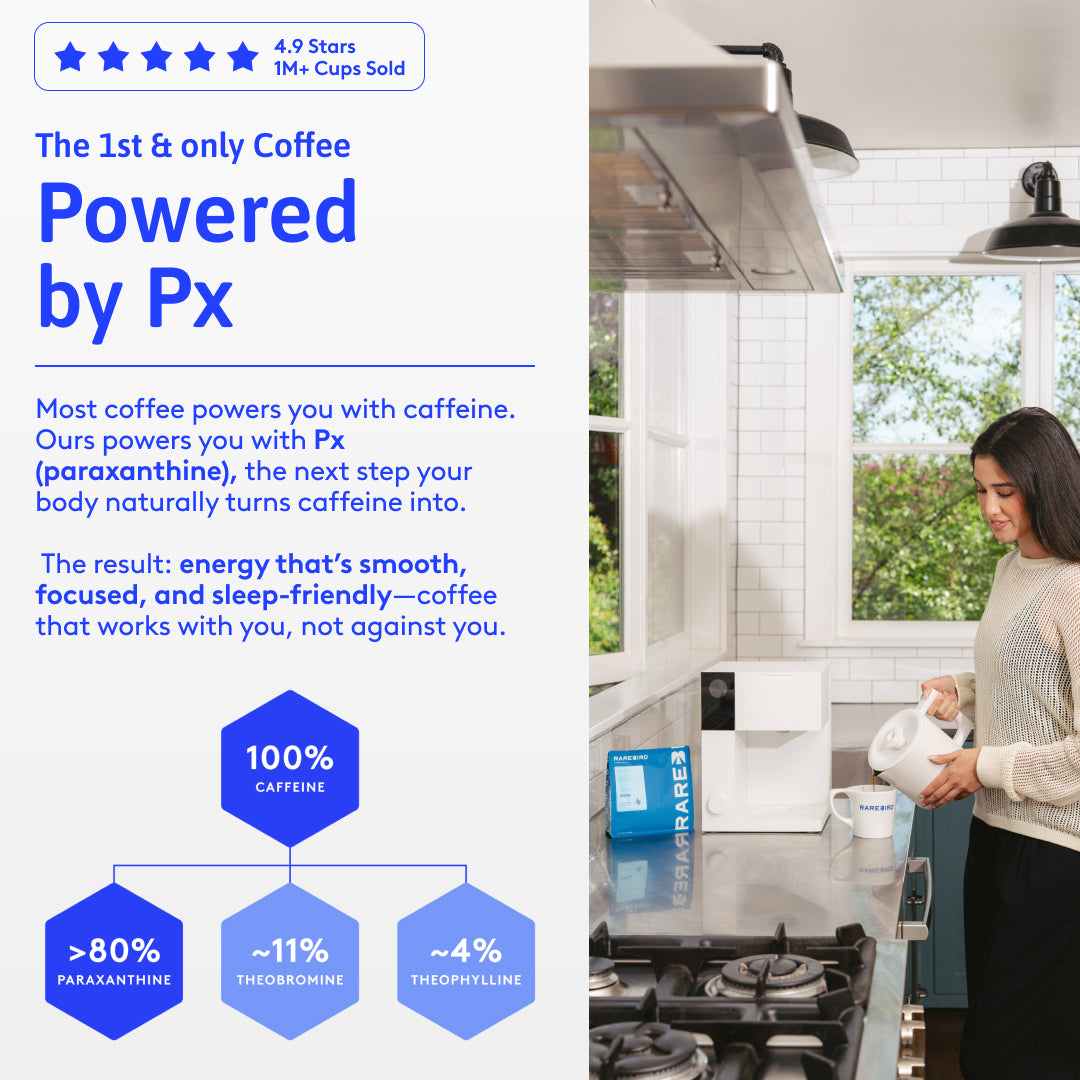
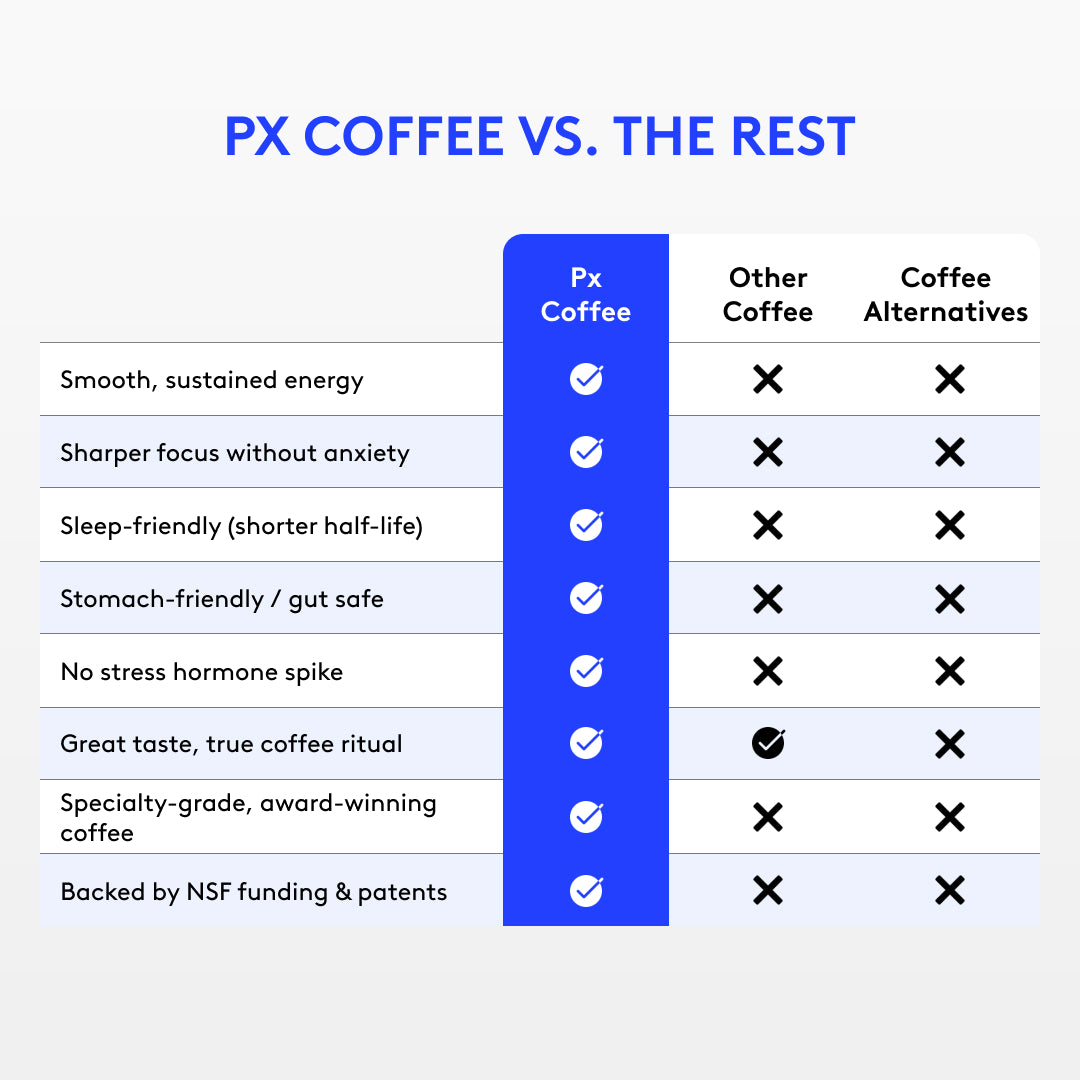
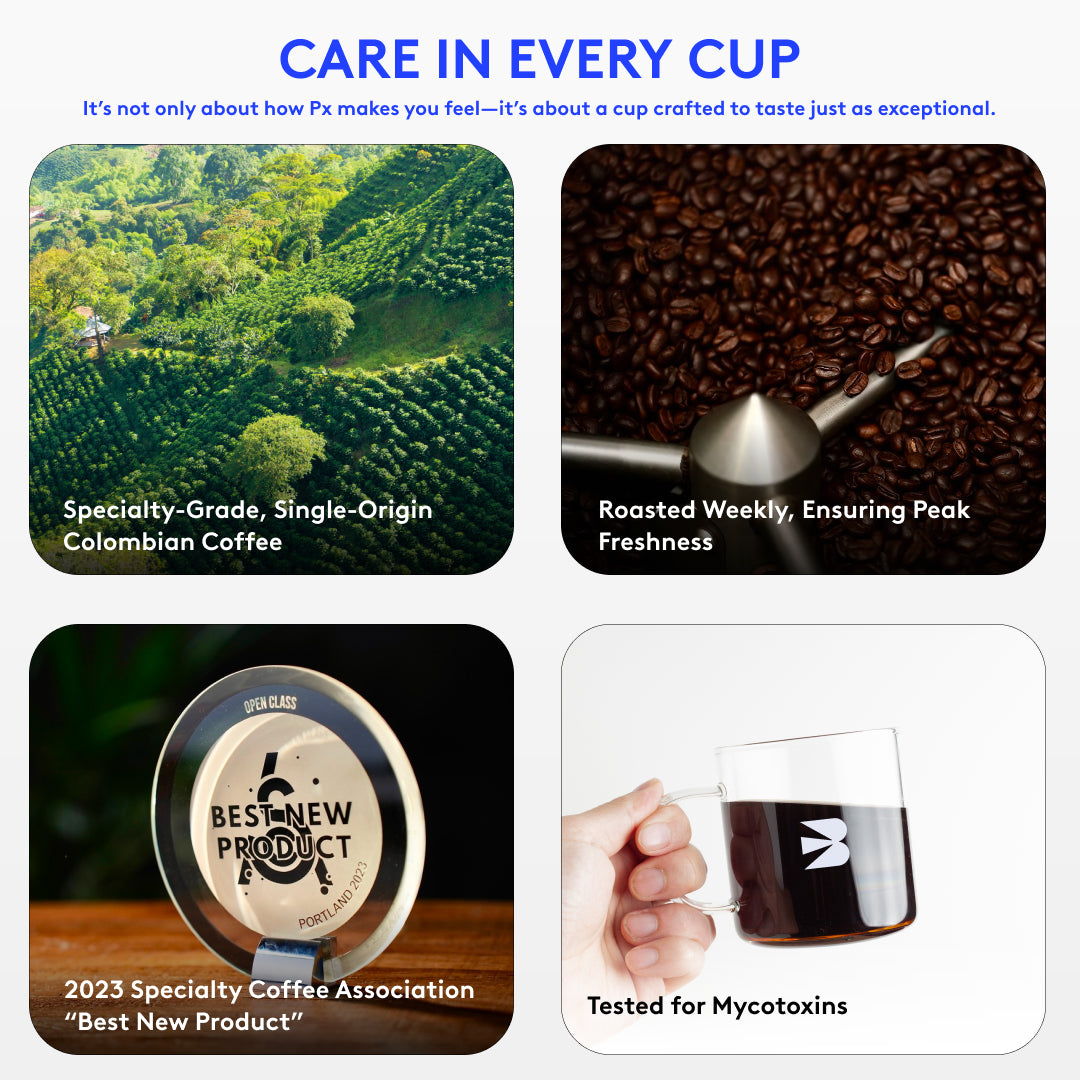
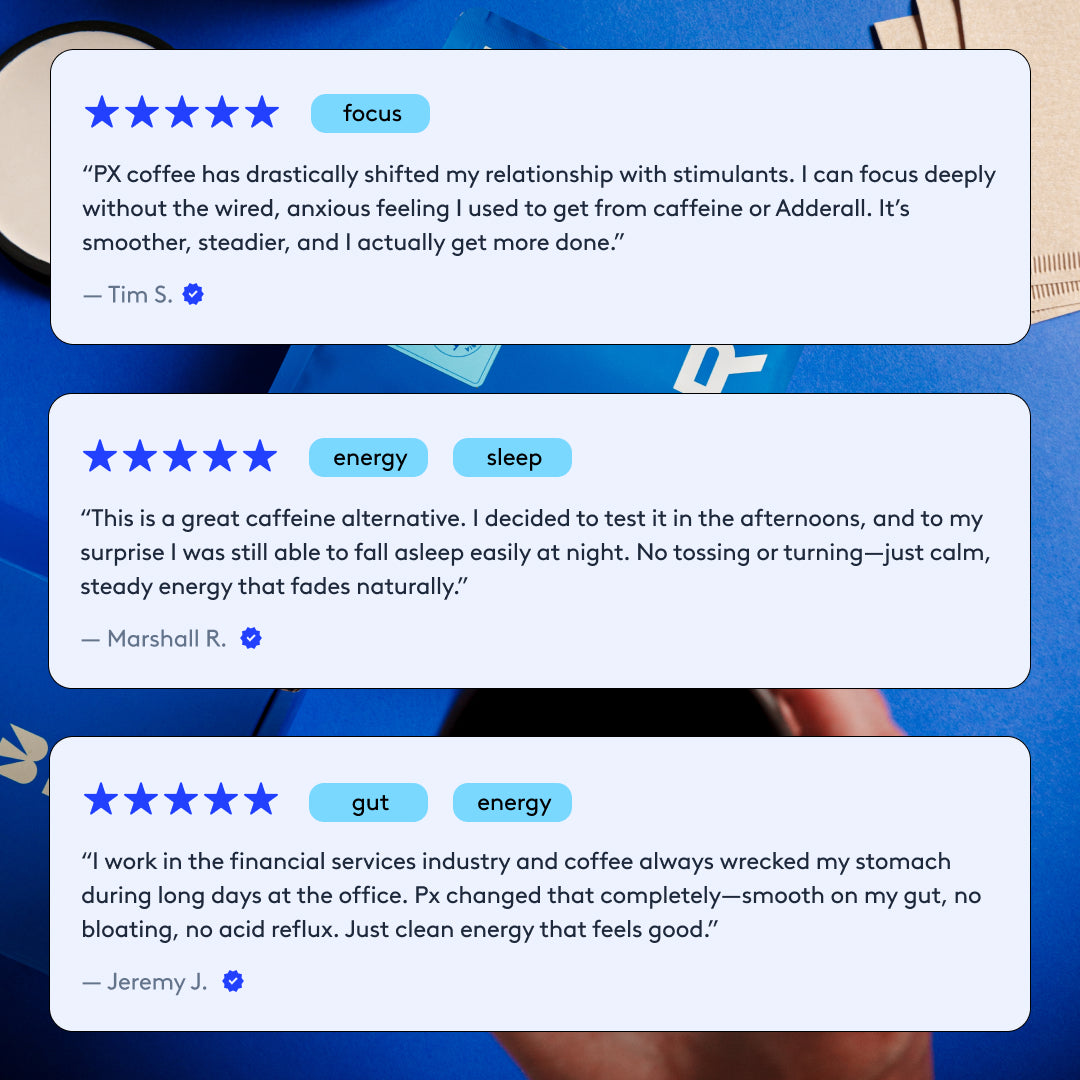


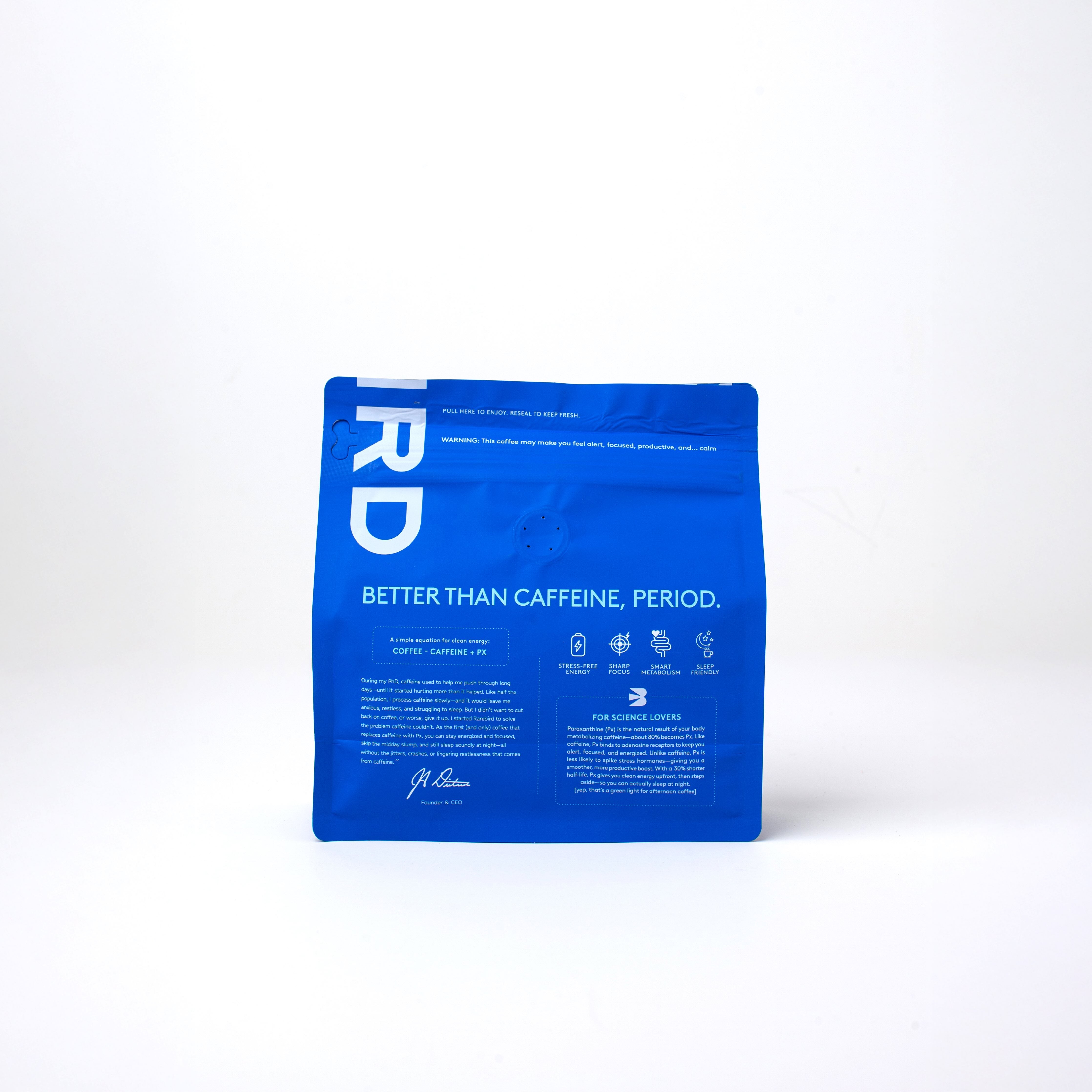
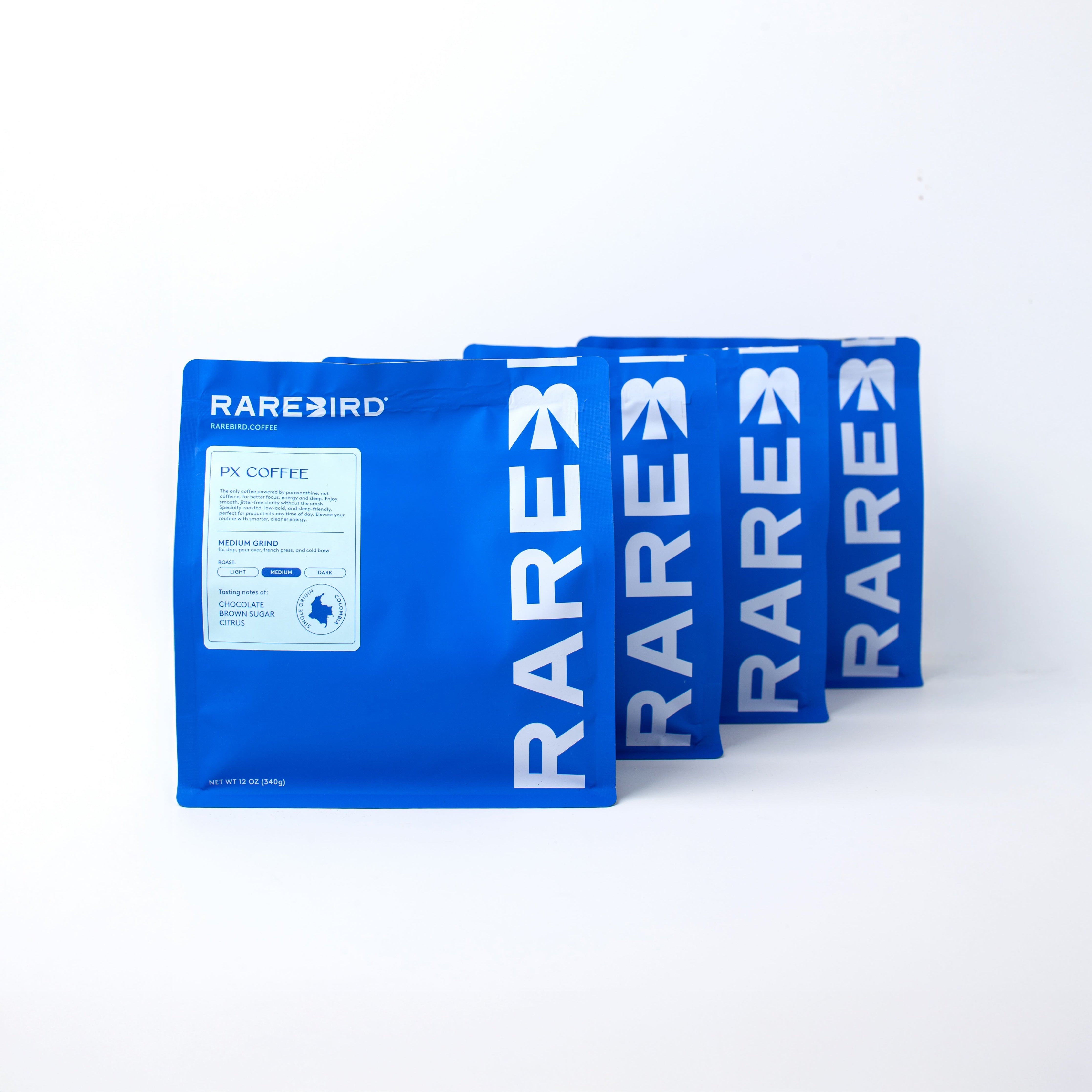
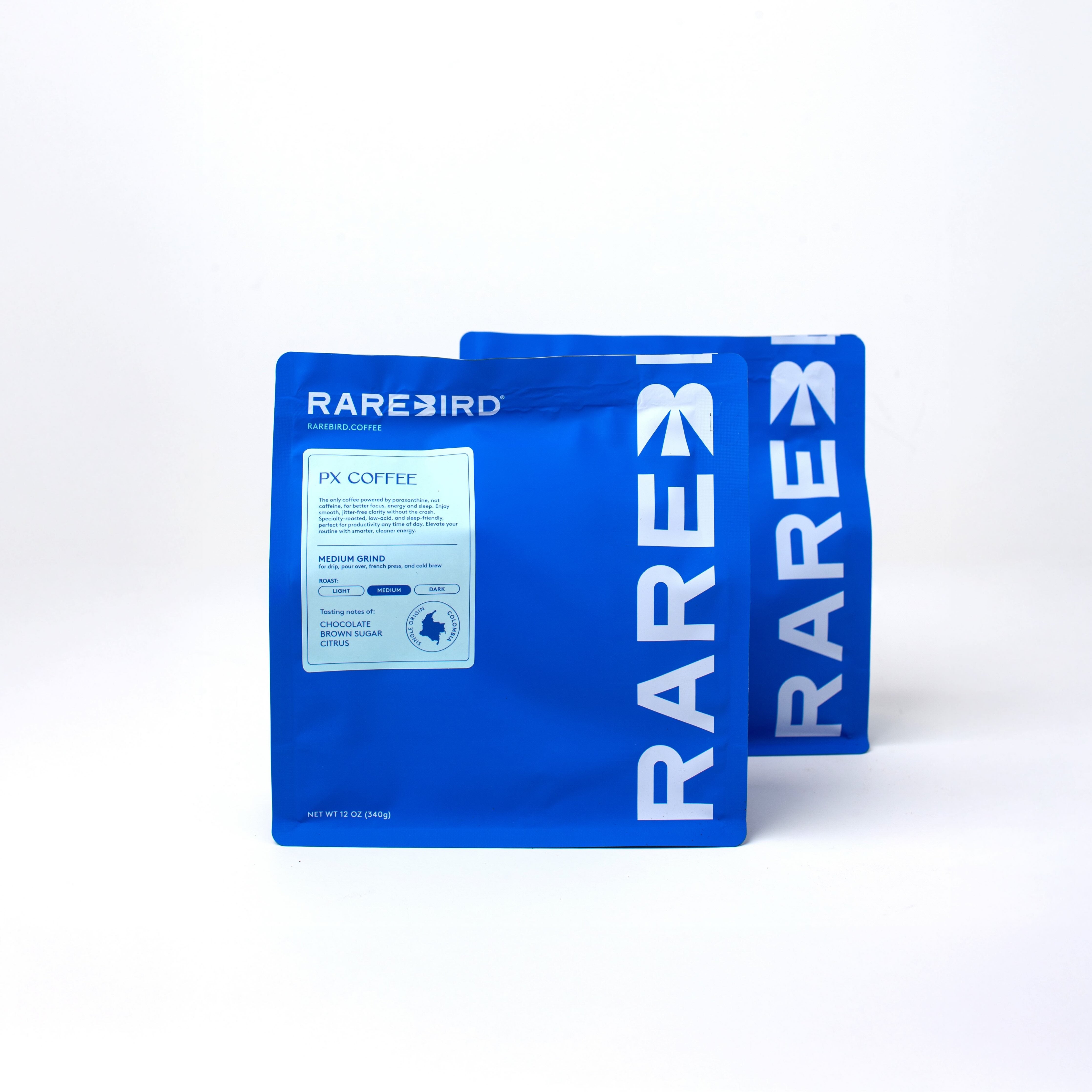
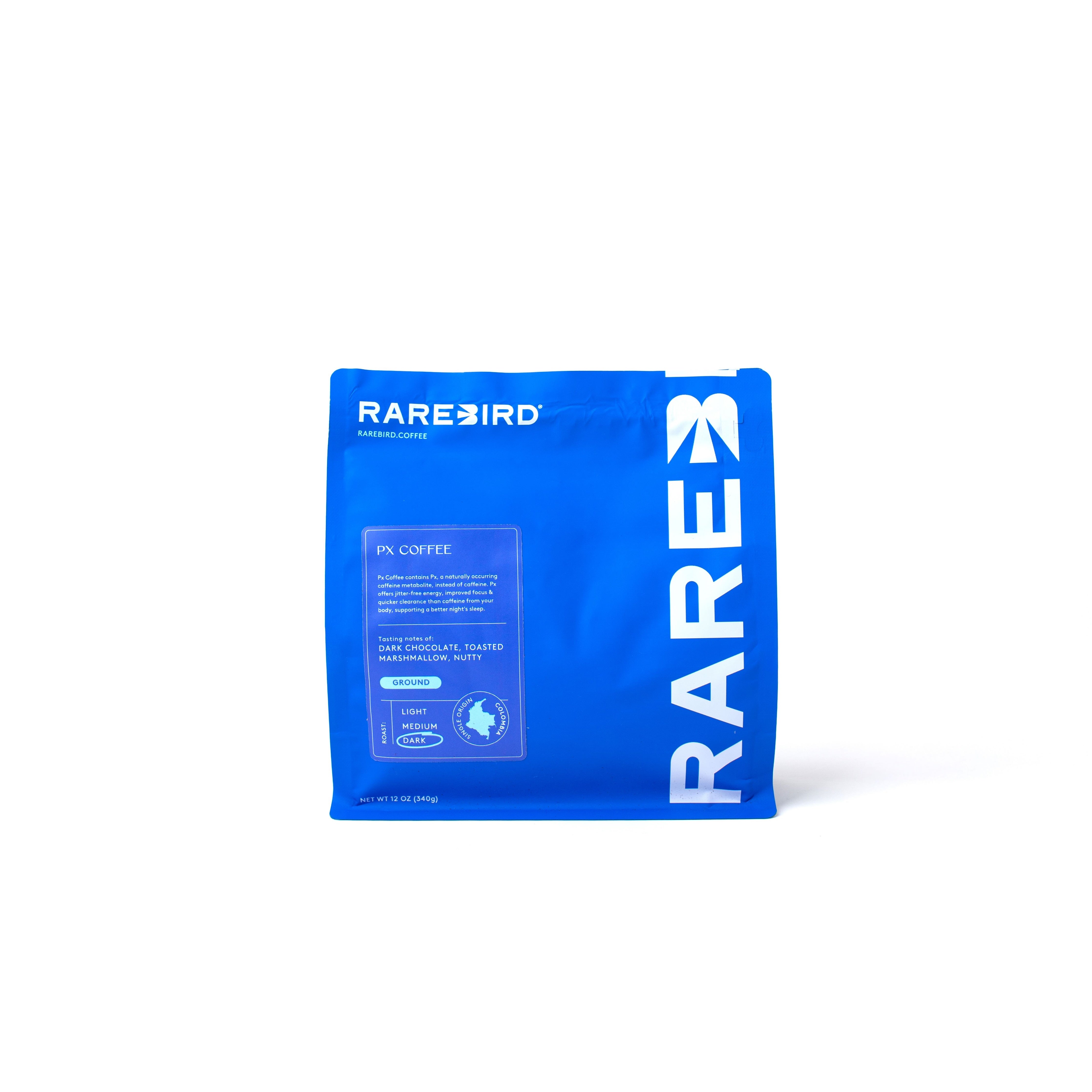
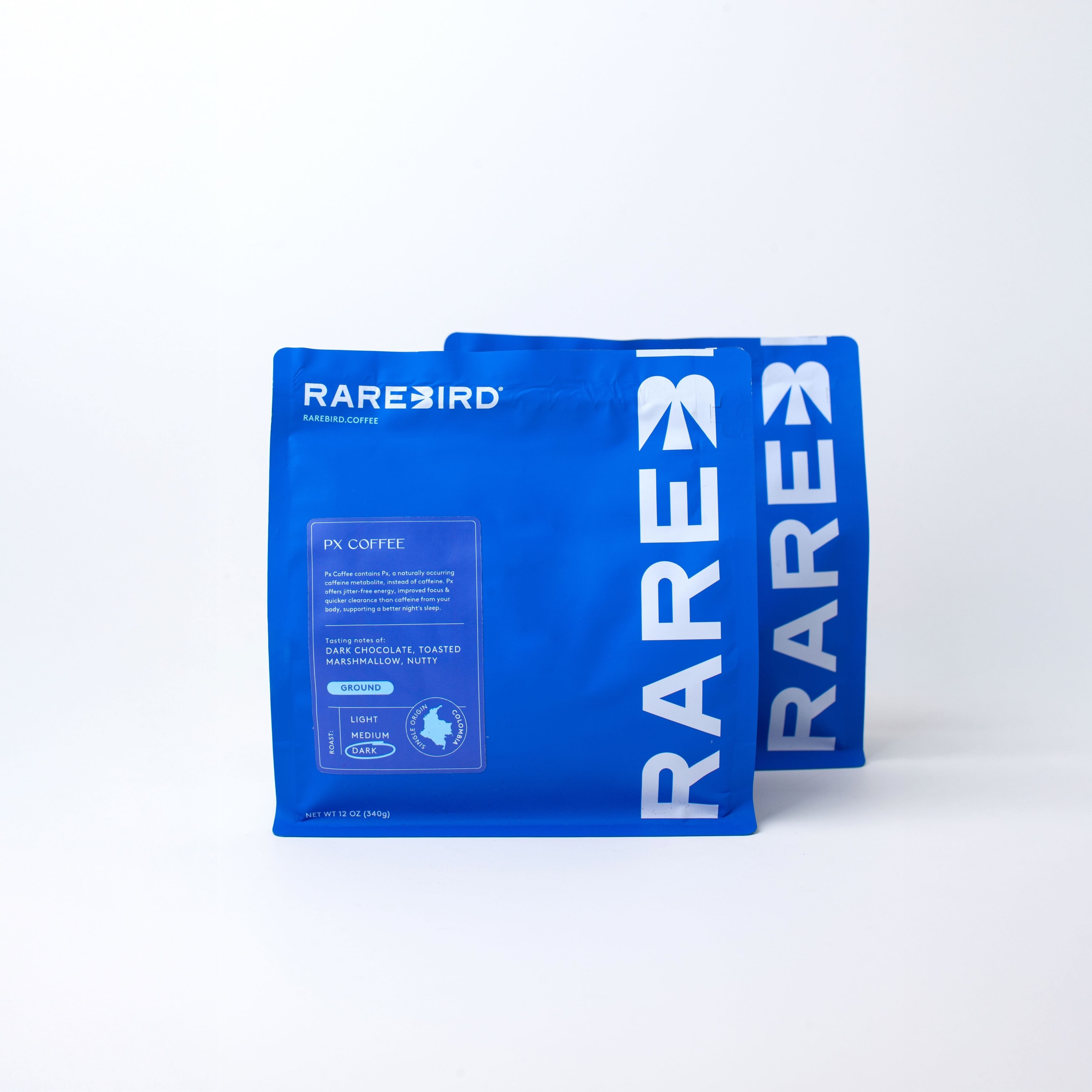
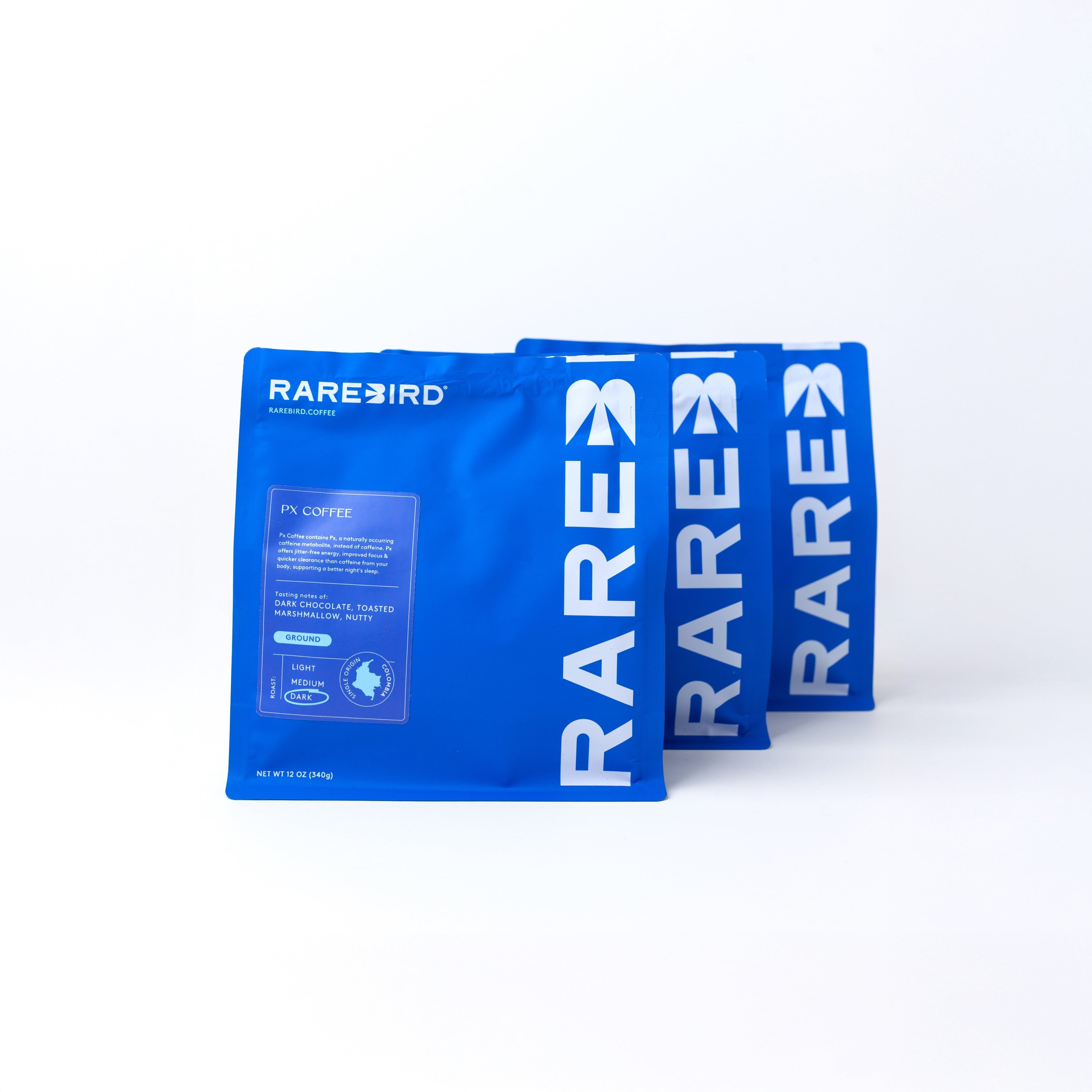
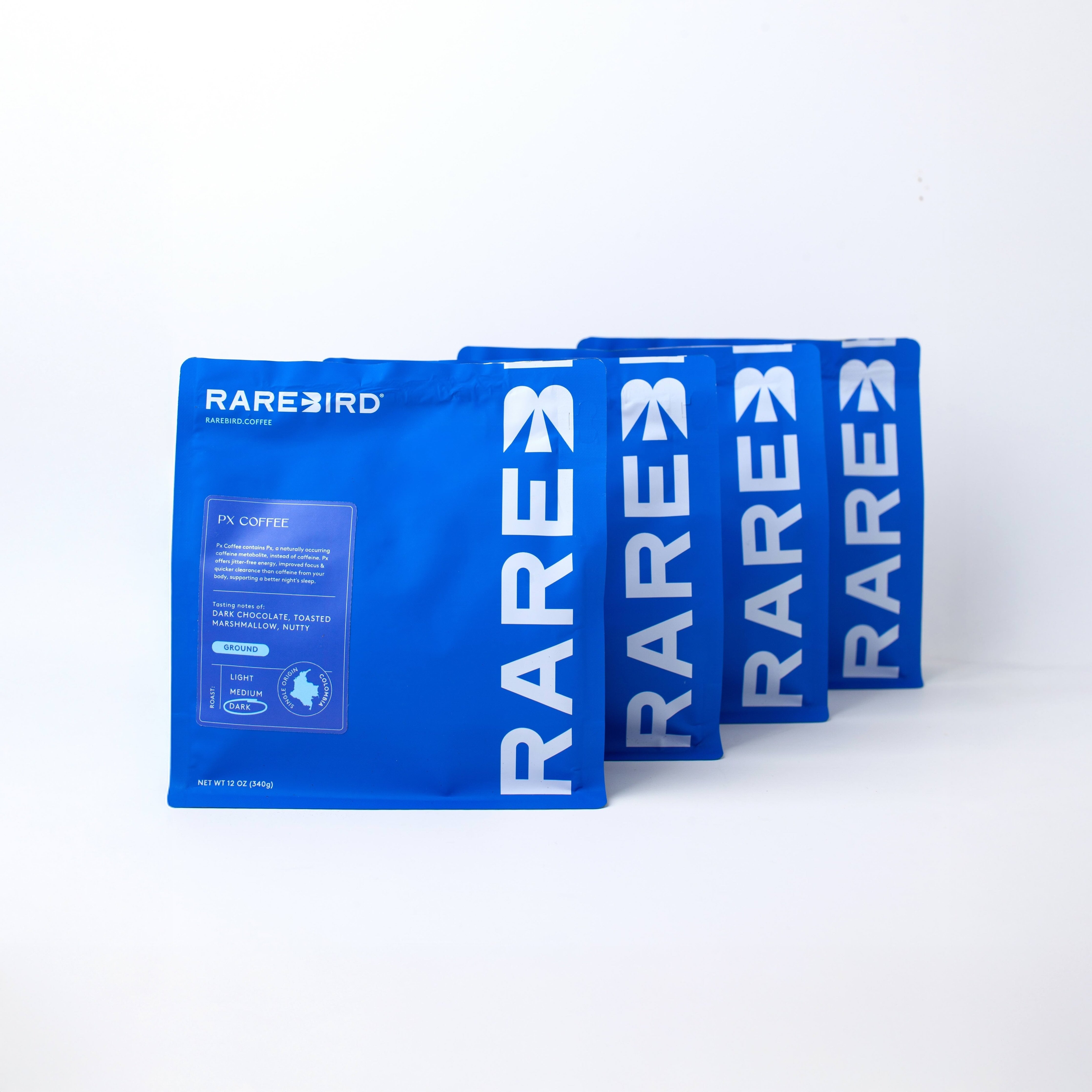
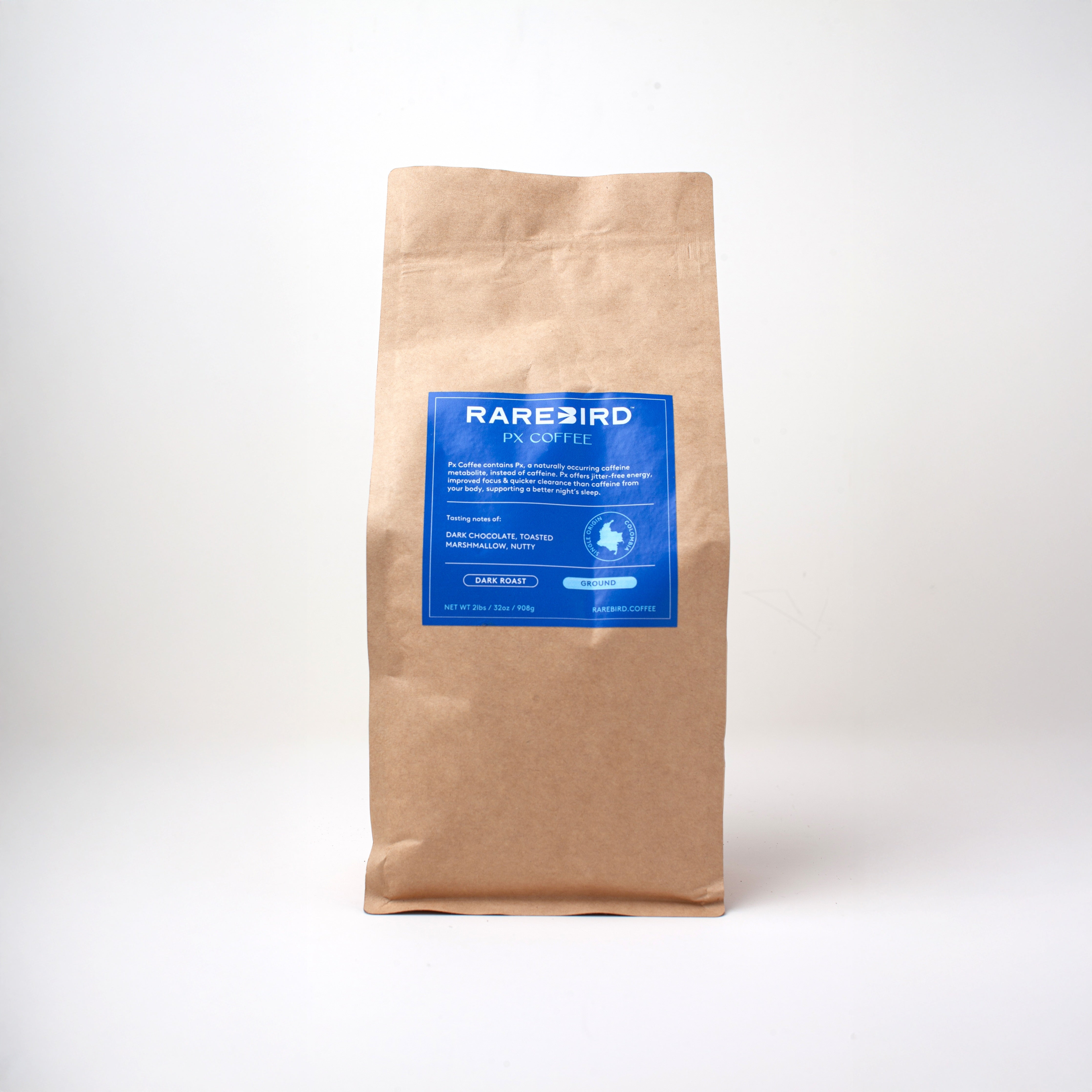
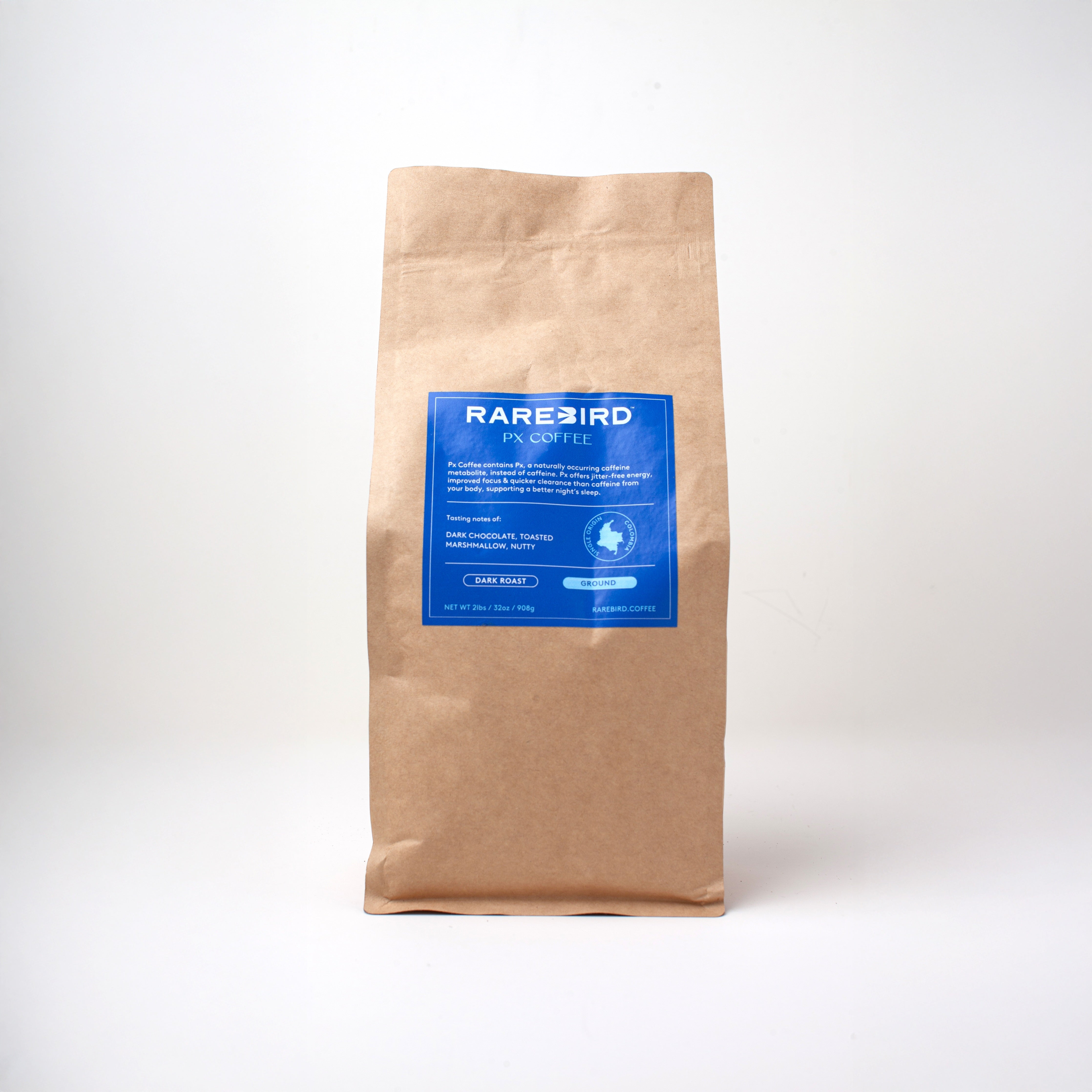
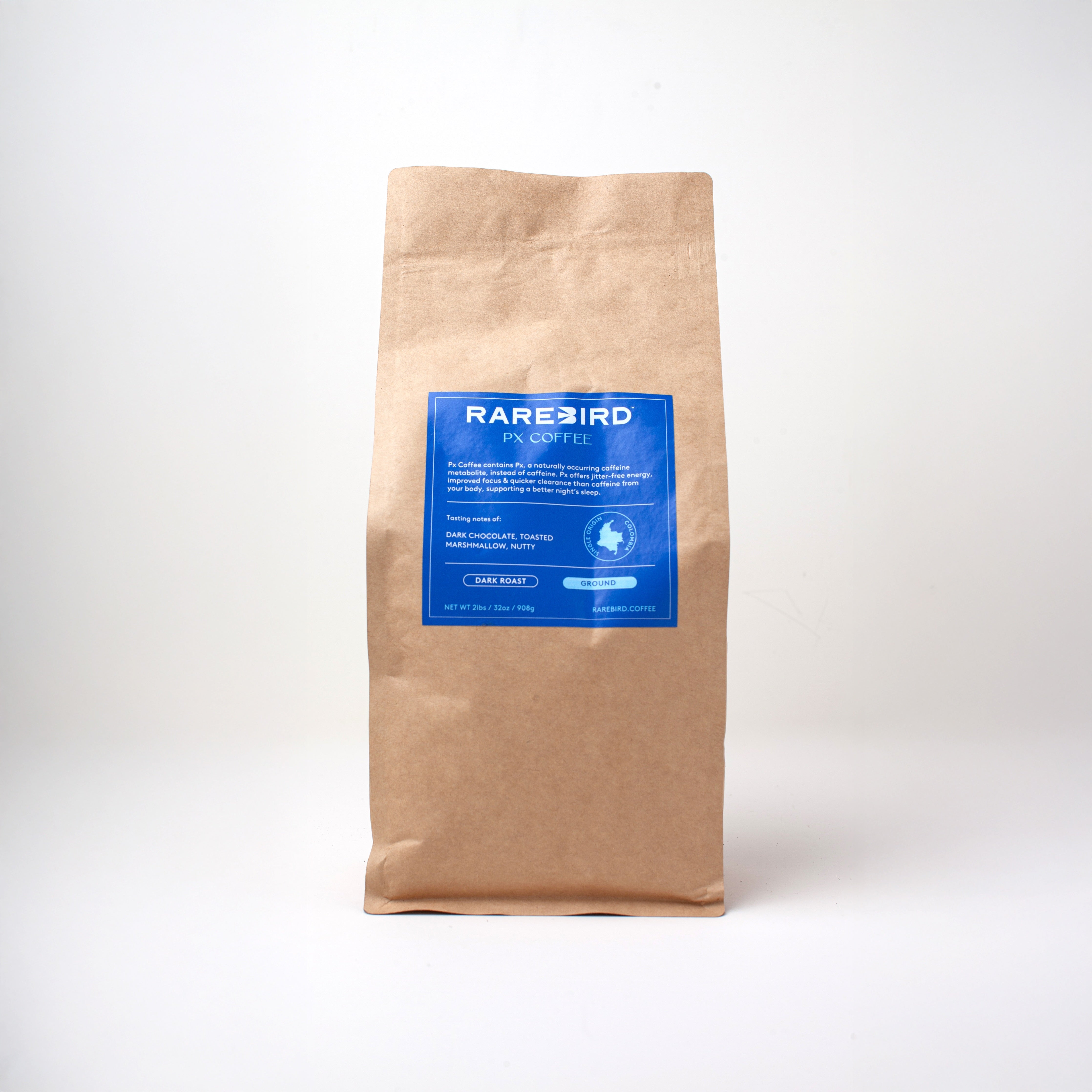
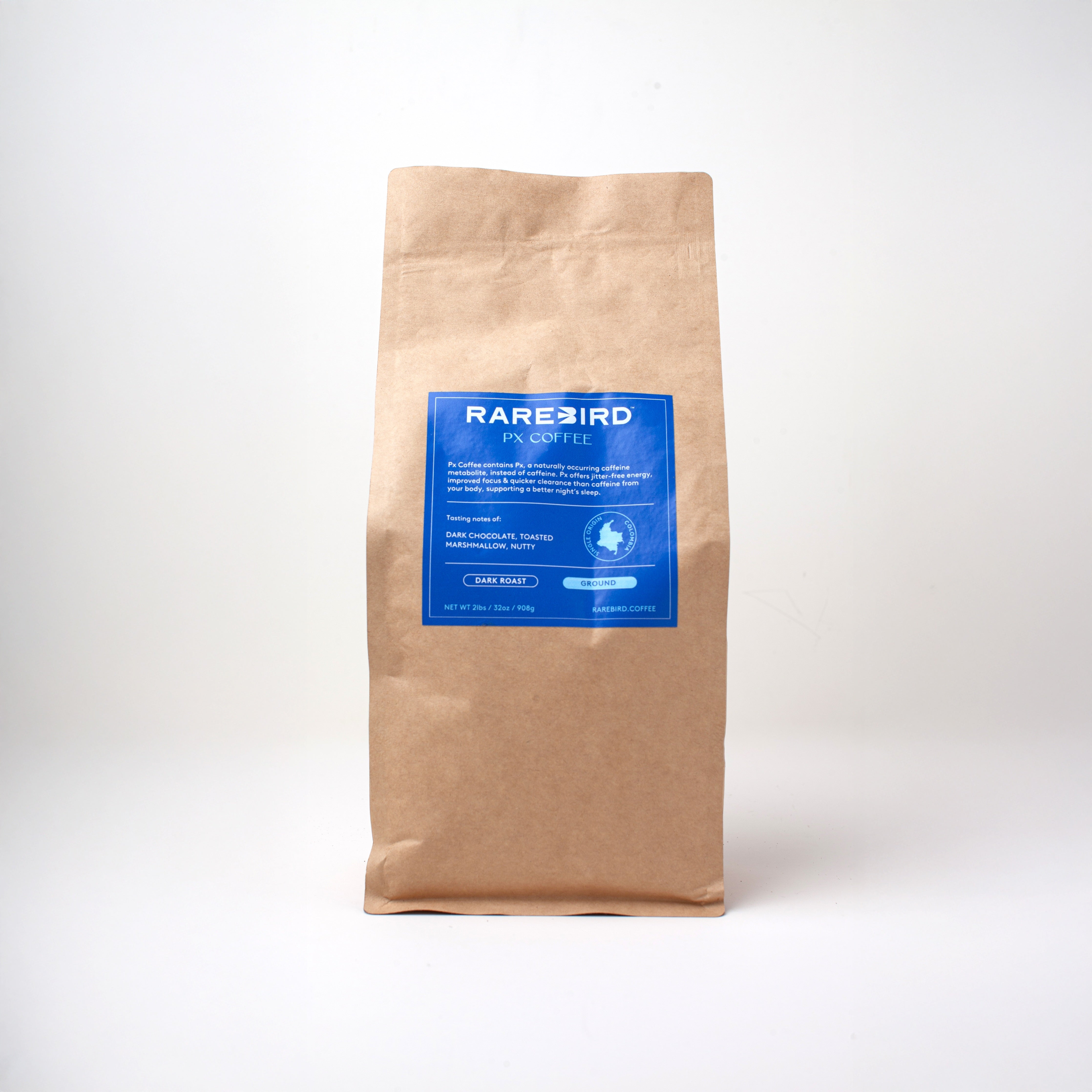






Share:
Coffee Spotlight: Crafting a Taste Experience to Match Px's Benefits
All About Mycotoxins: Ochratoxin A and Aflatoxin in Coffee